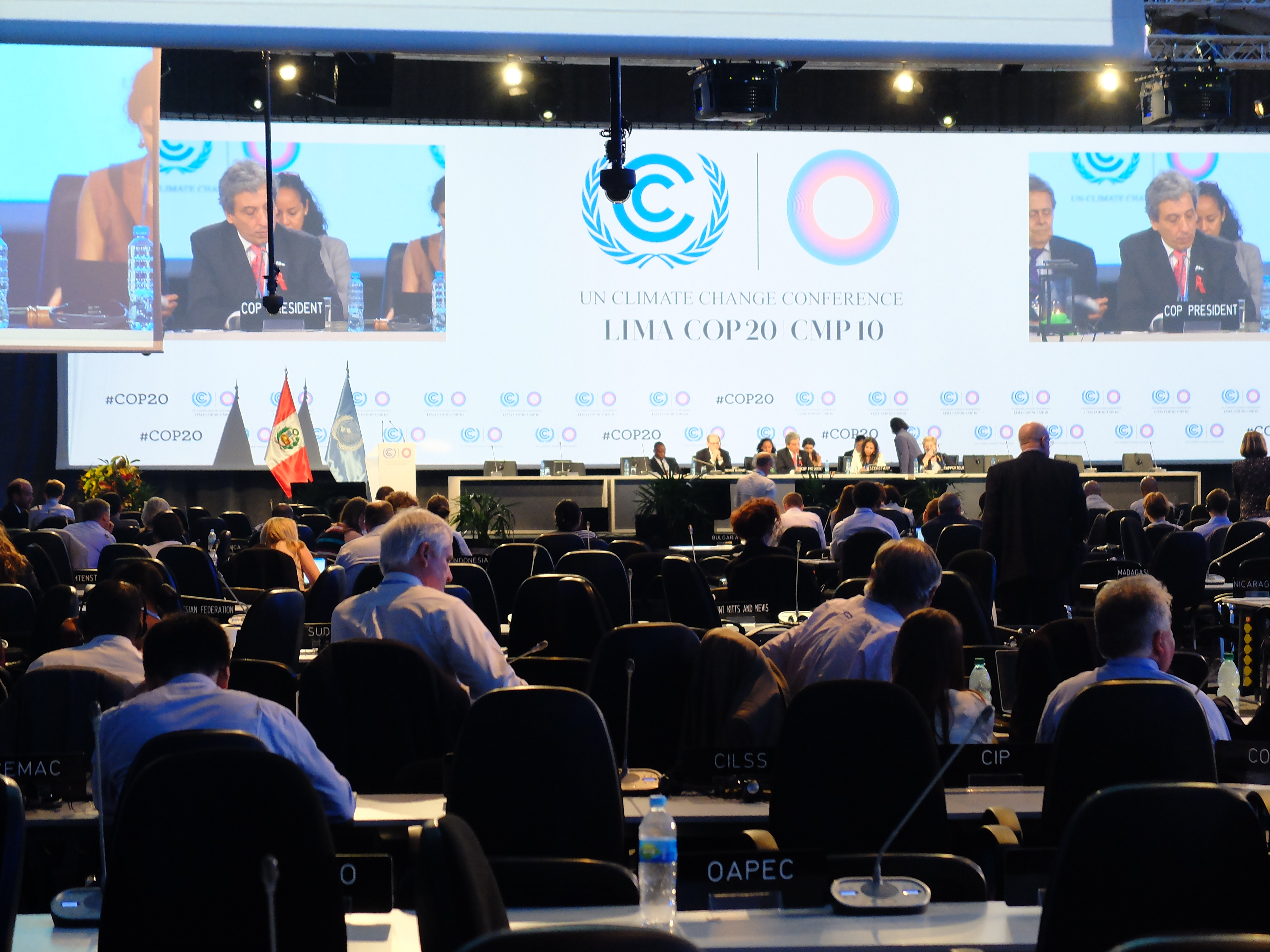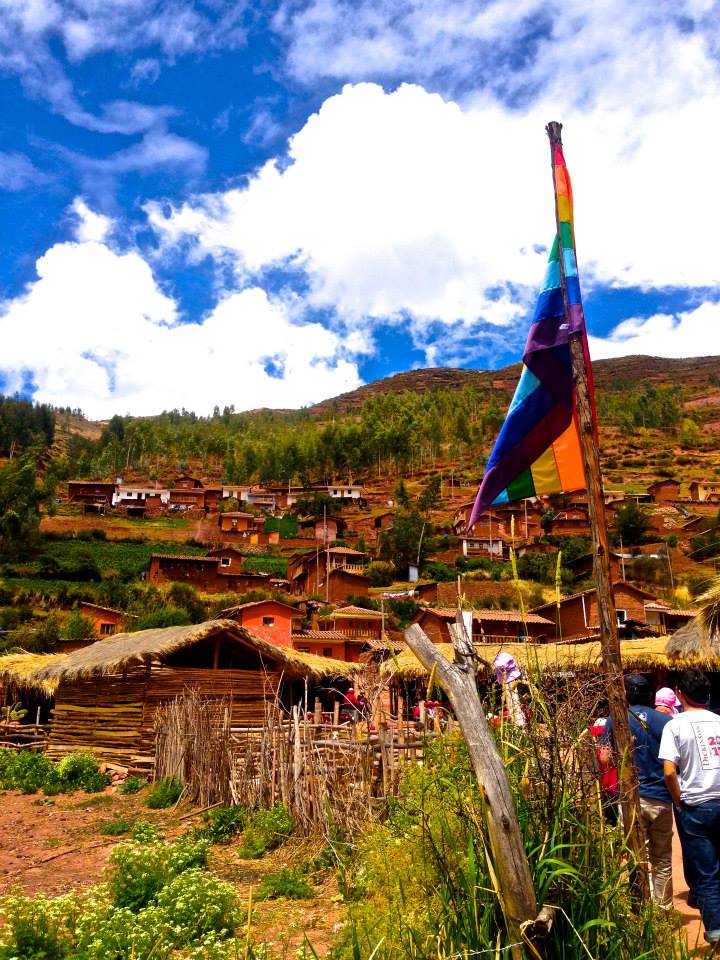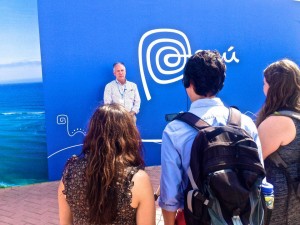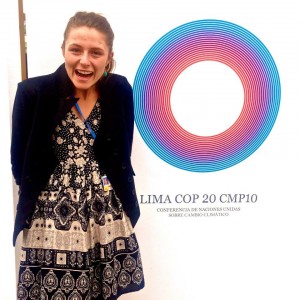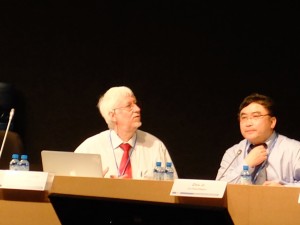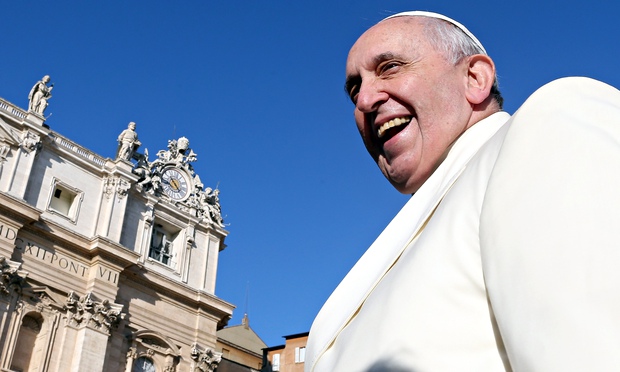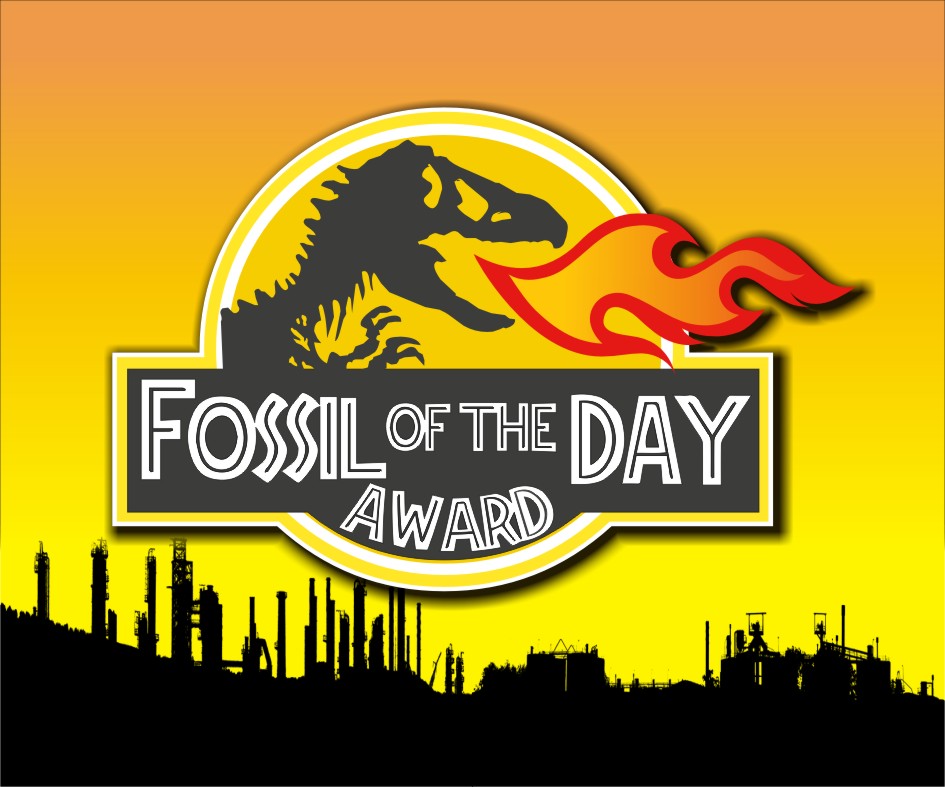Now that I’ve had a solid 4 weeks of relaxation (and transcribing interviews) since I got home from Peru and the COP, it’s time to begin thinking about school again, and as such, I’ve decided to reflect on the COP with a blog post.
I never actually stopped thinking about the COP, or at least climate change. Every time my mom made me a home-cooked meal, or I was out driving somewhere or eating with friends, I couldn’t help but think about the effect my actions were having on the climate. Something as simple as eating, and I couldn’t help but think about the emissions that went into putting a simple pizza on my plate! And Christmas was horrible, especially after hearing dozens of people talking about how we need to turn away from being such a consumer culture. I had already told my mom I didn’t really want to make a big deal about Christmas, but even so, it was still a huge operation, albeit less so than in past years.
But to get back to the topic at hand, in the weeks and months leading up to COP20, you could hear people such as Christiana Figueres, executive secretary of the UNFCCC, stressing the importance of this COP. In September, thousands of people worldwide took to the streets to take action. In New York City alone, more than 300,000 people took to the streets to demand action from those taking part in the New York Climate Summit, happening during the same time, with companies and investors declaring their commitment to a low-carbon world. The momentum leading up to this COP was amazing.
And it was deserved, too. COP20 in Lima was very important, as it would lay the groundwork for negotiations to take place in Paris the next year for COP21, which would be even more important as the Paris COP, where governments will attempt to reach a universal climate agreement. But, being at COP20, there’s so much going on that it’s hard to catch what’s actually going on in the main negotiations. I don’t think I actually knew what had come out of Lima until I came home. So here I will try to show some important things that came out of the Lima negotiations:
First of all, a draft text was decided on that will be used in negotiations leading up to Paris. Over 100 countries are now advocating for a long-term mitigation goal, which is a good sign, and there is also good support for review cycles to strengthen emission reduction actions and support low-carbon growth.
In terms of the INDCs, or Intended Nationally Determined Contributions, which are to be submitted by March of this year (2015), proposed contributions will require information concerning the sectors and the gases covered, in addition to accounting approaches. The Lima decisions also allows for an analysis to be published by the UNFCCC aggregating all the contributions and reviewing how well they add up to staying below the 2 degrees Celsius marker.
Some progress was made on finance, which is a huge part of the climate negotiations. Contributions to the Green Climate Fund surpassed $10 billion, with 27 developed and 5 developing countries pledging money, giving a strong foundation to the GCF. Even with this, though, there is still much to be done on finance for crafting a post-2020 regime. The Lima decision urges developed countries to provide support, not necessarily finance, to developing countries, and the COP did request that developed countries help to “enhance the available quantitative and qualitative elements of a pathway,” but there is still much to be done in terms of specification in the Paris agreement about allocation and levels of finance, etc., in the post-2020 world.
One disagreement between developed and developing countries is about the attention that should be paid to adaptation (something I didn’t know until transcribing interviews). Developed countries believe negotiations should be focused on mitigation mainly, while developing countries want an equal focus on adaptation. Lima saw more attention paid to adaptation than previous COPs, with developing countries pushing for equal billing of adaptation in the Paris agreement. Many developed countries wanted to limit national contributions to mitigation only, but with the world already facing record-breaking floods and heat waves, developing countries were able to get adaptation included, albeit without much guidance on what information will be provided, and how these contributions will be assessed.
In addition to this, the process of how national adaptation planning is reported was improved, and there is now a work plan focusing on loss and damage.
Although much focus has been paid to a post-2020 agreement, the year is 2015, which means we have 5 years until that agreement would take hold. As such, negotiations also focused on pre-2020 actions. Countries will continue to share experiences curbing emissions, identify best policy actions, and continue expert meetings about actions through 2020.
Forests and reforestation, including REDD+, was also a talking point, due to the COP being held in a country with extensive forests. Brazil, Indonesia, Colombia, Guyana, Mexico and Malaysia all submitted reference levels benchmarking their emissions from deforestation, which paves the way to start receiving performance based payments for forest conservation and restoration. At the Global Landscapes Forum, Initiative 20×20 was launched, a Latin American country-led initiative to restore 20 million hectares of degraded forestland. Five impact investment firms pledged $365 million to recover cloud forests, avoid deforestation and boost climate-resilient agriculture. Also, advances in satellite forest monitoring and carbon mapping were announced in Lima.
But inside the COP, the focus on REDD+ was mainly on clarifying safeguards. Countries ended up not elaborating more on the safeguards, meaning countries can decide for themselves how to report on safeguards; disappointing for me as this is a topic which I got interested down in Lima, and this development is not something that will be good for many indigenous forest dwelling peoples.
Outside of these things, many cities including Rio de Janeiro, Paris and Tokyo highlighted best practices and pushed for greater action at the international level. Also, the Global Protocol for Community-Scale Greenhouse Gas Emission Inventories was announced. The first step of this is to identify and measure where city emissions come from through the use of the first global emissions standards for cities to track performance and set credible targets.
A lot of good stuff came out of COP20, but it is much weaker than what many people were hoping for. There is still a lot to be done in the coming year leading up to COP21, which will be crucial in keeping our world below 2 degrees Celsius. With so many countries and so many different viewpoints that need to be addressed to solve such a huge and time-sensitive problem, it’s very hard to stay optimistic, especially with so many people saying that we won’t be able to skirt disaster, but we’ve all got to try and keep on working to do what we can to avoid potential disaster.




